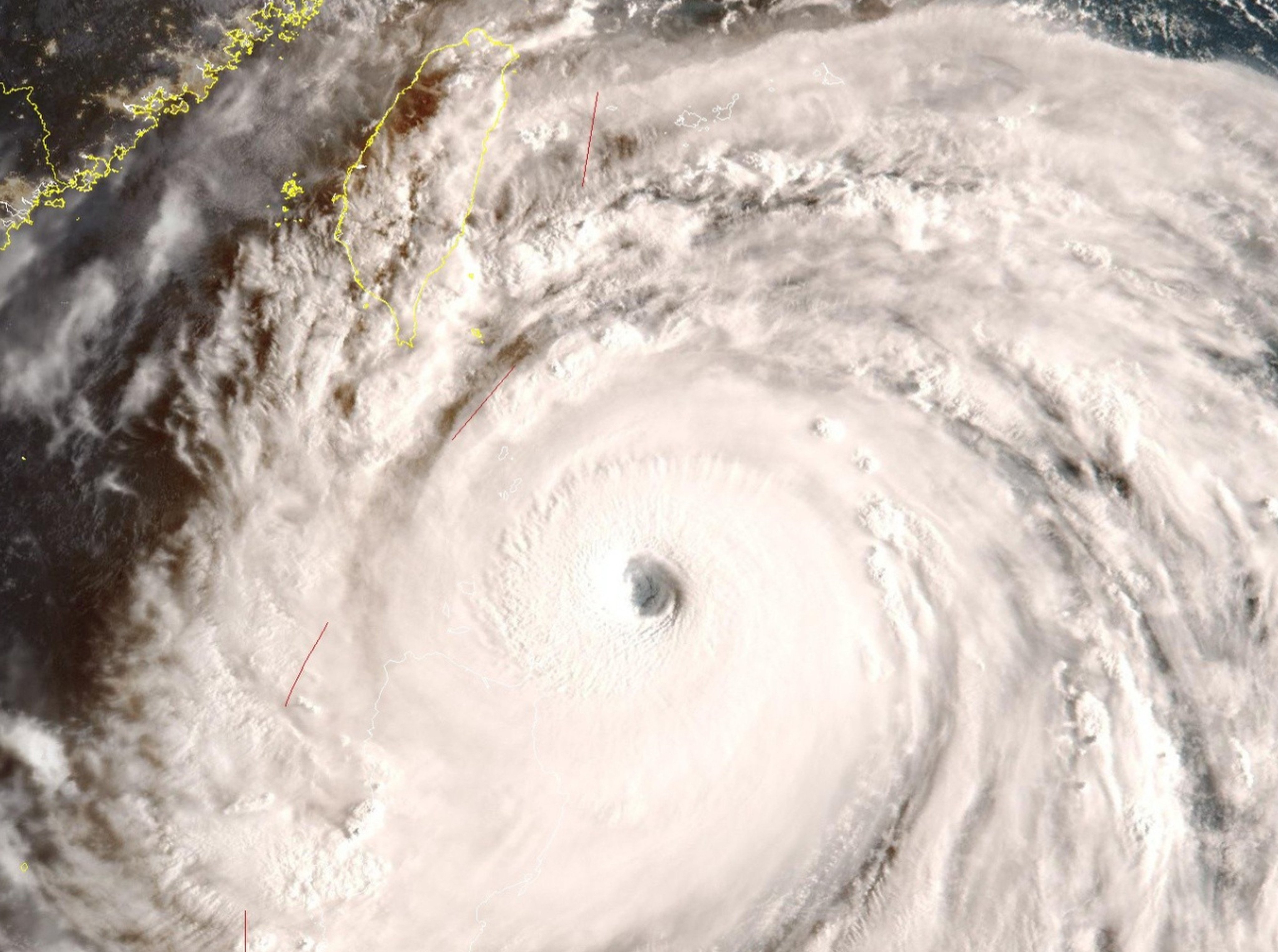Super Typhoon Ragasa Threatens Southern China as Death Toll Rises and Damage Mounts
At least 21 dead, 150+ injured, 770,000+ evacuated — impacts span Taiwan, the Philippines, Hong Kong and southern China.

At least 21 people have been confirmed dead, more than 150 are injured, and over 770,000 have been evacuated as Super Typhoon Ragasa tears through Asia, leaving a catastrophic trail from Taiwan and the Philippines to Hong Kong and now Southern China. The storm, regarded as the most powerful of 2025, has already destroyed thousands of homes, crippled transportation networks, and inflicted billions of dollars in damage as it roars across the South China Sea with winds nearing 200 kilometers per hour. Families are grieving loved ones swept away by raging floods and landslides, hospitals are overwhelmed with casualties, and entire coastal towns have been forced into darkness as power and water supplies collapse under the storm’s relentless assault.
In Taiwan, Ragasa’s fury was felt most acutely when relentless rains triggered a catastrophic dam breach in Guangfu, unleashing torrents that drowned villages and carried away vehicles, homes, and bridges. At least fourteen people were killed there, while more than one hundred remain missing. Rescue crews working through mudslides and collapsed roads struggle to reach survivors stranded on rooftops or clinging to debris in swollen rivers. In one village, a single bridge collapse isolated hundreds of families, forcing helicopters to conduct desperate airlifts. Farmers watched helplessly as rice paddies and banana groves were swept away, jeopardizing food security for months to come.

The Philippines endured widespread devastation as Ragasa hammered its coastal provinces, killing at least four and displacing thousands. Landslides buried homes in mountainous communities, while flash floods inundated urban streets, swallowing cars and destroying livelihoods. Fishermen’s boats were smashed against rocks or dragged out to sea, cutting off vital income for families already struggling. In rural towns, churches, schools, and municipal halls were hastily converted into shelters where families huddled together, rationing food and clean water while waiting for government aid. For many, the typhoon was not only a meteorological event but a personal catastrophe that erased years of hard-earned progress in a single night.
Hong Kong suffered a direct and brutal impact. Hurricane-force winds tore trees from their roots, hurled scaffolding from skyscrapers, and shattered glass facades across the waterfront. Storm surges crashed over sea walls, flooding luxury hotels and sending torrents of water through apartment lobbies. Public spaces were destroyed as coastal walkways collapsed into the ocean, while pedestrian bridges lost entire sections of roofing. Authorities raised the maximum typhoon signal, ordering all schools and businesses closed, suspending all public transport, and shutting down the airport. More than two hundred flights were canceled, stranding travelers in terminals already battered by leaks and power failures. At least thirty people were injured in the chaos, while hospitals scrambled to accommodate the wounded. Macau too was paralyzed, its famous casinos shuttered as floodwaters advanced through city streets and electricity grids failed.
On the Chinese mainland, the province of Guangdong braces for landfall as Ragasa barrels toward its coastline. Anticipating the storm’s destructive force, officials evacuated over three-quarters of a million people from vulnerable low-lying areas. Ports were closed, fishing vessels recalled, and highways sealed. Bullet trains and buses ground to a halt, leaving cities eerily still as millions of residents hunkered down behind boarded windows and sandbag barricades. Emergency crews, bolstered by military units, prepared temporary shelters stocked with medical supplies, food, and portable generators. Still, fears persist that Ragasa’s rain bands could trigger deadly landslides in Guangdong’s mountainous regions, further compounding the crisis.
The scale of damage is staggering. Entire neighborhoods across multiple countries have been submerged, roads fractured beyond repair, and power grids torn down, plunging millions into darkness. Communication blackouts have left families unable to confirm the safety of loved ones, fueling anguish across affected regions. Economists estimate losses already running into billions of dollars, with agriculture particularly devastated: crops destroyed in Taiwan, fisheries obliterated in the Philippines, and coastal industries in Hong Kong and Guangdong forced into indefinite shutdowns. For many families, the storm has erased not only homes but also the livelihoods that sustained generations.
Scientists warn that Ragasa’s rapid intensification into a super typhoon underscores the growing dangers of a warming climate. Warmer ocean temperatures, they note, likely fueled the storm’s explosive growth, allowing it to sustain peak strength for longer than typical seasonal cyclones. This, combined with densely populated coastal cities, has magnified both human and economic costs. Relief organizations have sounded alarms, urging governments to accelerate investments in climate adaptation, coastal defenses, and early-warning systems. The lesson is urgent: without stronger preparedness, future storms could inflict even greater devastation.
Amid the wreckage, stories of resilience emerge. Neighbors in flood-hit Taiwanese towns linked arms to rescue stranded children from rising waters. Volunteers in the Philippines carried the elderly on makeshift rafts to safety. In Hong Kong, firefighters braved hurricane winds to free residents trapped in flooded basements. In Guangdong, community centers have transformed into havens where families share food, blankets, and hope. Yet the pain is undeniable. Survivors recount harrowing escapes, the trauma of losing loved ones, and the despair of seeing entire lifetimes of labor washed away.
As Ragasa presses inland, the storm is expected to weaken gradually but not before unleashing further torrents of rain across southern China. Flash flood warnings remain in effect, and the risk of landslides looms large. For millions in its path, the nightmare is far from over. The storm’s legacy will be written in the grief of those who lost family members, the resilience of survivors determined to rebuild, and the lessons that governments and societies must draw to face an era of increasingly violent storms.

Bottom line: Super Typhoon Ragasa is a humanitarian and economic catastrophe across multiple countries — the storm highlights urgent needs in disaster preparedness, climate adaptation, and coordinated international relief.



